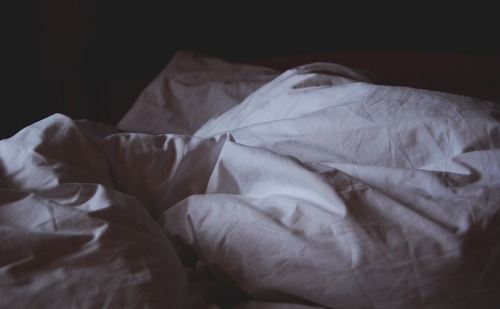8 things you can do to get back asleep when you wake up in the wee hours
There is nothing worse than waking up in the middle of the night. Here are some expert-approved tips for getting to sleep.

Picture this: You wake up in the middle of the night and you just. can’t. fall. back. asleep. Your mind is racing, and as you watch the hours on the clock tick by—3 a.m., 3:30, 4—you become increasingly anxious about being awake. It’s a particular kind of hell that we’ve all been privy to at some point. But why does it happen, and what can you do to fix it?
“Unfortunately, when we wake up in the middle of the night, we worry about it,” says Courtney F. Bancroft, PsyD, a clinical health psychologist and insomnia specialist. That, in turn, does all of the things that send “wake” signals from the circadian clock: The body’s heart rate increases, blood pressure rises, and temperature jumps up. Collectively, Bancroft says, this behavior makes the body believe that it’s under threat. “Because of that, [the body] intentionally keeps us awake and alert,” she explains. Yikes!
“Unfortunately, when we wake up in the middle of the night, we worry about it.”
Obviously, the best way to avoid the whole “being awake all night” thing is to simply stay asleep. “It’s best to have a ‘hungry’ sleep drive,” Bancroft says. That means reserving between 14 and 18 hours of awake time between sleep sessions. In addition, use your bed exclusively for sleep and sex—and create an environment that will activate the circadian clock. (Think cool, dark, and relaxing.) Finally, to set yourself up for snoozing success, aim for a consistent bedtime, and try a mind/body relaxation ritual 20 to 45 minutes before bed each night. If all of that sounds easier said than done, don’t worry.
Here are Bancroft’s tried-and-true tricks for falling back asleep after you’ve woken up in the middle of the night.

1. Breathe deeply
The worst part about waking up at 3 a.m. is freaking out that you’re never going to fall back asleep. So take a deep breath—literally. “Progressive muscle relaxation or diaphragmatic breathing…can both help distract the mind and relax the body,” says Bancroft. Use meditative breathing to help your body unwind, and your mind will eventually follow.

2. Count sheep (literally)
…or koalas, or kittens if you prefer. The point is to zone out. “These strategies are supposed to be so mundane and repetitive that they help to relax the arousal drive and focus on something else,” Bancroft says. Baa.

3. Try an inversion
Getting upside down has many benefits, from improving your focus to draining your lymphatic system. It can help you find your bedtime Zen, too. “Laying on your back with your legs up the wall promotes circulation and relaxation,” says Bancroft. Consider this yet another way to do some yoga poses in bed.

4. Tell your mind to chill
For some reason, when we wake up in the middle of the night, our brains decide that it’s the perfect time to start worrying about the fact that you don’t know, say, how to do your own taxes. Bancroft suggests quieting the mind by telling yourself that you’re safe. Then, reassign those thoughts for the daytime. “Your problem-solving skills [then] are better than in the middle of the night,” she says. Basically, anything that will help you calm your mind in the moment is going to help you slumber more easily.

5. Turn over your pillow
Finding the cool side of the pillow may feel like a myth, but flipping things over really can be a game-changer. “This promotes a cooler temperature, which can help send signals to the brain that it’s time to sleep,” says Bancroft.

6. Sip some warm milk
Turns out Mom was right about this one. “Drinking something warm, or taking a warm shower or bath before bed, helps the body temperature to begin to drop,” says Bancroft. That mimics the body’s natural cooling process that occurs during sleep. Tricky, tricky.

7. Lie still
You may feel like a dog playing dead at first, but fake sleeping can ultimately lead to the real thing. “Laying the head back in a dark, cool environment…can also help promote signals for sleep and natural production of melatonin,” says Bancroft. And no screens allowed!

8. Go into another room
This method works best for hardcore insomniacs who have spent more than six months’ worth of nights losing sleep. “If you are lying awake in bed for hours, night after night…the brain starts to associate the bed with being awake,” says Bancroft. The key is to retrain your mind. After 20 minutes of not sleeping, get up and sit somewhere else. When you start to feel drowsy, head back to bed. Dreamland, here you come.
A good night’s rest starts with your bedroom. Here are 7 spaces to help you get some calming decorating inspiration and a convincing argument for making your sleep space screen-free.
Sign Up for Our Daily Newsletter
Get all the latest in wellness, trends, food, fitness, beauty, and more delivered right to your inbox.
Got it, you've been added to our email list.










